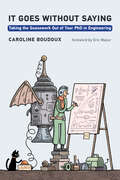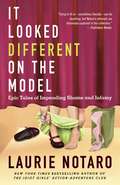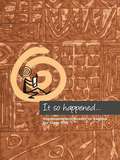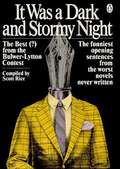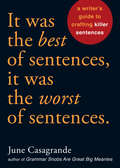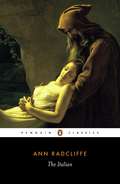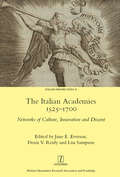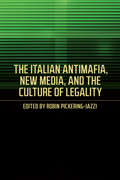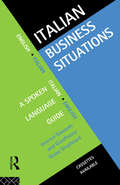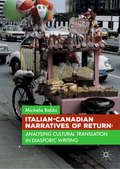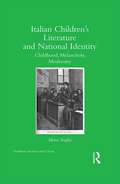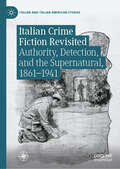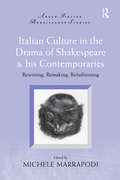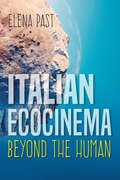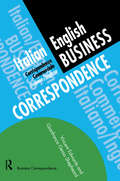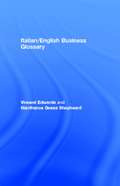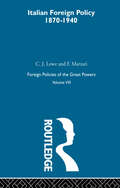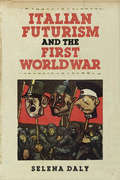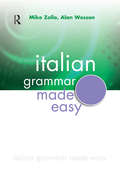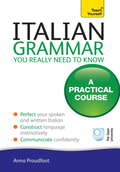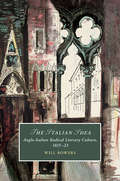- Table View
- List View
It Goes without Saying: Taking the Guesswork Out of Your PhD in Engineering
by Caroline BoudouxThe definitive toolkit for doctoral students in engineering on thesis—and journal article—preparation, project (and stress) management, IP protection, collaborations, and other aspects of the PhD journey.It shouldn't take a PhD to get a PhD, but sometimes the process can seem that confusing—even though, to the mentors and advisors, so obvious that it goes without saying. For doctoral students in engineering confronting this dilemma, Caroline Boudoux, an accomplished researcher and entrepreneur, provides a demystifying guide to the challenges—daunting, seemingly routine, and at times unexpected—of pursuing a PhD in this demanding field. In It Goes without Saying, Boudoux marshals her considerable experience mentoring graduate students, teaching doctoral workshops, and—not so long ago—earning her own PhD at MIT to give PhD candidates the know-how, and the confidence, to succeed.Among the topics this book takes up are: What a PhD is: the journey, the milestones, and the endgame.Technical questions about what a doctoral project in engineering is and how to lead one.Practical matters including tips on writing, from proposal to dissertation; ethics; and intellectual property.Personal concerns, such as dealing with expectations, imposter syndrome, and stress.From the mundane to the metaphysical, this user-friendly guide gives the doctoral student in engineering the tools to make it from Day 1 to the successful completion of the PhD in a timely, fully informed, and forward-looking manner.
It Looked Different on the Model: Epic Tales of Impending Shame and Infamy
by Laurie NotaroEveryone's favorite Idiot Girl, Laurie Notaro, is just trying to find the right fit, whether it's in the adorable blouse that looks charming on the mannequin but leaves her in a literal bind or in her neighborhood after she's shamefully exposed at a holiday party by delivering a low-quality rendition of "Jingle Bells." Notaro makes misstep after riotous misstep as she shares tales of marriage and family, including stories about the dog-bark translator that deciphers Notaro's and her husband's own "woofs" a little too accurately, the emails from her mother with "FWD" in the subject line ("which in email code means Forecasting World Destruction"), and the dead-of-night shopping sprees and Devil Dog-devouring monkeyshines of a creature known as "Ambien Laurie." At every turn, Notaro's pluck and irresistible candor set the New York Times bestselling author on a journey that's laugh-out-loud funny and utterly unforgettable.From the Trade Paperback edition.r that deciphers Notaro's and her husband's own "woofs" a little too accurately, the emails from her mother with "FWD" in the subject line ("which in email code means Forecasting World Destruction"), and the dead-of-night shopping sprees and Devil Dog-devouring monkeyshines of a creature known as "Ambien Laurie."At every turn, Notaro's pluck and irresistible candor sets the New York Times bestselling author on a journey that's laugh-out-loud funny and utterly unforgettable.From the Trade Paperback edition.
It So Happened: Supplementary Reader in English class 8 - NCERT - 23
by National Council of Educational Research and Training"It So Happened" is a supplementary reader in English designed for Class VIII students. The textbook is a collection of engaging stories that explore diverse themes, characters, and moral lessons. Through carefully selected narratives, the book aims to enhance students' reading comprehension skills, vocabulary, and critical thinking abilities. The stories are thought-provoking and cover a range of genres, providing students with a holistic literary experience. The characters and situations in the book offer valuable insights into human nature, ethical dilemmas, and the complexities of life. "It So Happened" not only serves as a tool for language development but also encourages students to reflect on universal values and principles embedded in the narratives.
It Was a Dark and Stormy Night: The Best from the Bulwer-Lytton Contest
by Scott Rice"The camel died quite suddenly on the second day, and Selena fretted sulkily and, buffing her already impeccable nails--not for the first time since the journey began--pondered snidely if this would dissolve into a vignette of minor inconveniences like all the other holidays spent with Basil." <P><P> The Bulwer-Lytton Fiction Contest-- named in honor of Victorian literary has-been and renowned whist player Edward Bulwer-Lytton-- is the world-famous competition that seeks to find the most atrocious opening sentence to a hypothetical lousy novel. Abounding in shameless sentences, this is a hilarious-- even perversely instructive-- collection of skilled ineptitude. <P><P> <P><P>A few heroic entries: <P><P> * "Safeway wasn't open when Keegan pulled his Chevy into the lot, its valves chattering, gun-blue cracked-ring smoke sputtering from its tail pipe, to get eggs." <P><P> * "I was a fifty-four-year-old male virgin but I'm all right now." <P><P> * "The surface of the strange forbidden planet was roughly textured and green, much like cottage cheese gets way after the date on the lid says it is all right to buy it."
It Was a Dark and Stormy Night: Yet More of the Best (?) from the Bulwer-Lytton Fiction Contest
by Scott RiceThe Bulwer-Lytton Fiction Contest has been calling for entrants to write an opening sentence to a hypothetical horrible novel for many years. Based on the entries in this fourth installment of It Was a Dark & Stormy Night, the depths are still to be plumbed. Enjoy these hilarious and yet awful first sentences and even worse rotten writing advice.
It Was the Best of Sentences, It Was the Worst of Sentences: A Writer’s Guide to Crafting Killer Sentences
by June CasagrandeGreat writing isn't born, it's built--sentence by sentence. But too many writers--and writing guides--overlook this most important unit. The result? Manuscripts that will never be published and writing careers that will never begin. In this wickedly humorous manual, language columnist June Casagrande uses grammar and syntax to show exactly what makes some sentences great--and other sentences suck. With chapters on "Conjunctions That Kill" and "Words Gone Wild," this lighthearted guide is perfect for anyone who's dead serious about writing, from aspiring novelists to nonfiction writers, conscientious students to cheeky literati. So roll up your sleeves and prepare to craft one bold, effective sentence after another. Your readers will thank you.
The Italian
by Ann RadcliffeFrom the first moment Vincentio di Vivaldi, a young nobleman, sets eyes on the veiled figure of Ellena, he is captivated by her enigmatic beauty and grace. But his haughty and manipulative mother is against the match and enlists the help of her confessor to come between them. Schedoni, previously a leading figure of the Inquisition, is a demonic, scheming monk with no qualms about the task, whether it entails abduction, torture - or even murder. The Italian secured Ann Radcliffe's position as the leading writer of Gothic romance of the age, for its atmosphere of supernatural and nightmarish horrors, combined with her evocation of sublime landscapes and chilling narrative.
The Italian Academies 1525-1700: Networks of Culture, Innovation and Dissent (Legenda)
by Jane E. Everson Denis V Reidy Lisa SampsonThe intellectual societies known as Academies played a vital role in the development of culture, and scholarly debate throughout Italy between 1525-1700. They were fundamental in establishing the intellectual networks later defined as the ‘République des Lettres’, and in the dissemination of ideas in early modern Europe, through print, manuscript, oral debate and performance. This volume surveys the social and cultural role of Academies, challenging received ideas and incorporating recent archival findings on individuals, networks and texts. Ranging over Academies in both major and smaller or peripheral centres, these collected studies explore the interrelationships of Academies with other cultural forums. Individual essays examine the fluid nature of academies and their changing relationships to the political authorities; their role in the promotion of literature, the visual arts and theatre; and the diverse membership recorded for many academies, which included scientists, writers, printers, artists, political and religious thinkers, and, unusually, a number of talented women. Contributions by established international scholars together with studies by younger scholars active in this developing field of research map out new perspectives on the dynamic place of the Academies in early modern Italy. The publication results from the research collaboration ‘The Italian Academies 1525-1700: the first intellectual networks of early modern Europe’ funded by the Arts and Humanities Research Council and is edited by the senior investigators.
The Italian Antimafia, New Media, and the Culture of Legality
by Robin Pickering-IazziThe past two decades have witnessed increasing opposition to mafia influence and activities in Italy. Community organizations such as Libera, founded in 1995, and Addiopizzo, originating in 2004, exemplify how Italian society has tried to come together to promote antimafia activities. The societal opposition to mafia influence continues to grow and the Internet has become a frontline in the battle between the two groups. The Italian Antimafia, New Media, and the Culture of Legality is the first book to examine the online battles between the mafia and its growing cohort of opponents. While the mafia’s supporters have used Internet technologies to expand its power, profits, and violence, antimafia citizens employ the same technologies to recreate Italian civil society. The contributors to this volume are experts in diverse fields and offer interdisciplinary studies of antimafia activism and legality in online journalism, Twitter, YouTube, digital storytelling, blogs, music, and photography. These examinations enable readers to understand the grassroots Italian cultural revolution, which makes individuals responsible for promoting justice, freedom, and dignity.
Italian Business Situations: A Spoken Language Guide (Business Situations Ser.)
by Vincent Edwards Gianfranca Gessa ShepheardItalian Business Situations is a handy reference and learning text for all who use or need spoken Italian for business.Over 40 situations are simply presented, including* basic phone calls* leaving messages* making presentations* comparing, enquiring, booking* selling techniquesWith full English translations and usage note, Italian Business Situations will help you to communicate confidently and effectively in a broad range of everyday situations.
Italian-Canadian Narratives of Return: Analysing Cultural Translation in Diasporic Writing
by Michela BaldoThis book examines the concept of translation as a return to origins and as restitution of lost narratives, and is based on the idea of diaspora as a term that depicts the longing to return home and the imaginary reconstructions and reconstitutions of home by migrants and translators. The author analyses a corpus made up of novels and a memoir by Italian-Canadian writers Mary Melfi, Nino Ricci and Frank Paci, examining the theme of return both within the writing itself and also in the discourse surrounding the translations of these works into Italian. These ‘reconstructions’ are analysed through the lens of translation, and more specifically through the notion of written code-switching, understood here as a fictional tool which symbolizes the translational movements between different points of view. This book will be of particular interest to students and scholars of translation and interpreting, migration studies, and Italian and diasporic writing.
Italian Children’s Literature and National Identity: Childhood, Melancholy, Modernity (Children's Literature and Culture)
by Maria TruglioThis book bridges the fields of Children’s Literature and Italian Studies by examining how turn-of-the-century children’s books forged a unified national identity for the new Italian State. Through contextualized close readings of a wide range of texts, Truglio shows how the 19th-century concept of recapitulation, which held that ontogeny (the individual’s development) repeats phylogeny (the evolution of the species), underlies the strategies of this corpus. Italian fairy tales, novels, poems, and short stories imply that the personal development of the child corresponds to and hence naturalizes the modernizing development of the nation. In the context of Italy’s uneven and ambivalent modernization, these narrative trajectories are enabled by a developmental melancholia. Using a psychoanalytic lens, and in dialogue with recent Anglophone Children’s Literature criticism, this study proposes that national identity was constructed via a process of renouncing and incorporating paternal and maternal figures, rendered as compulsory steps into maturity and modernity. With chapters on the heroic figure of Garibaldi, the Orientalized depiction of the South, and the role of girls in formation narratives, this book discloses how melancholic itineraries produced gendered national subjects. This study engages both well-known Italian texts, such as Collodi’s The Adventures of Pinocchio and De Amicis’ Heart, and books that have fallen into obscurity by authors such as Baccini, Treves, Gianelli, and Nuccio. Its approach and corpus shed light on questions being examined by Italianists, Children’s Literature scholars, and social and cultural historians with an interest in national identity formation.
Italian Crime Fiction Revisited: Authority, Detection, and the Supernatural, 1861–1941 (Italian and Italian American Studies)
by Stefano SerafiniThis book offers the first extensive investigation of Italian crime fiction in the period between 1861, the year of Italy’s unification, and 1941, when the famous Mondadori series ‘I libri gialli’, which had published crime novels since 1929, was suppressed by the fascist regime. By exploring the formal and thematic metamorphoses of Italian crime narratives and probing the different socio-political roles that they played in both the liberal and fascist periods, it provides a radical re-conceptualization, in both historical and theoretical terms, of a form of fiction that has been largely marginalized for both aesthetic and ideological reasons, uncovering how it was implicated in the construction of the modern state and in the articulation and shaping of the process of ‘making Italians’.
Italian Culture in the Drama of Shakespeare and His Contemporaries: Rewriting, Remaking, Refashioning (Anglo-Italian Renaissance Studies)
by Michele MarrapodiApplying recent developments in new historicism and cultural materialism - along with the new perspectives opened up by the current debate on intertextuality and the construction of the theatrical text - the essays collected here reconsider the pervasive influence of Italian culture, literature, and traditions on early modern English drama. The volume focuses strongly on Shakespeare but also includes contributions on Marston, Middleton, Ford, Brome, Aretino, and other early modern dramatists. The pervasive influence of Italian culture, literature, and traditions on the European Renaissance, it is argued here, offers a valuable opportunity to study the intertextual dynamics that contributed to the construction of the Elizabethan and Jacobean theatrical canon. In the specific area of theatrical discourse, the drama of the early modern period is characterized by the systematic appropriation of a complex Italian iconology, exploited both as the origin of poetry and art and as the site of intrigue, vice, and political corruption. Focusing on the construction and the political implications of the dramatic text, this collection analyses early modern English drama within the context of three categories of cultural and ideological appropriation: the rewriting, remaking, and refashioning of the English theatrical tradition in its iconic, thematic, historical, and literary aspects.
Italian Ecocinema Beyond the Human (New Directions in National Cinemas)
by Elena PastEntangled in the hybrid fields of ecomedia studies and material ecocriticism, Elena Past examines five Italian films shot on location and ponders the complex relationships that the production crews developed with the filming locations and the nonhuman cast members. She uses these films—Red Desert (1964), The Winds Blows Round (2005), Gomorrah (2008), Le quattro volte (2010), and Return to the Aeolian Islands (2010)—as case studies to explore pressing enviornmental questions such as cinema's dependence on hydrocarbons, the toxic waste crisis in the region of Campania, and our reliance on the nonhuman world. Dynamic and unexpected actors emerge as the subjects of each chapter: playful goats, erupting volcanoes, airborne dust particles, fluid petroleum, and even the sound of silence. Based on interviews with crew members and close readings of the films themselves, Italian Ecocinema Beyond the Human theorizes how filmmaking practice—from sound recording to location scouting to managing a production—helps uncover cinema's ecological footprint and its potential to open new perspectives on the nonhuman world.
Italian/English Business Correspondence (Languages For Business Ser.)
by Vincent Edwards Gianfranca Gessa ShepheardItalian/English Business Correspondence is a handy reference and learning text for all who use written Italian. 80 written communications are simply presented covering memos, letters, faxes and resumes. The situations covered include:*Arranging meetings*Acknowledging orders*Enquiring about products*Applying for jobsWith full English translations, this text is suitable for both students and professionals and can be used for either reference or class use.
Italian/English Business Glossary (Business Language Glossaries Ser.)
by Vincent Edwards Gianfranca Gessa ShepheardThis is an essential reference companion to all who use Italian for business communication.Containing over 5000 words, this handy two-way A-Z glossary covers the most commonly used terms in business. It will help you to communicate with confidence in a wide variety of business situations, and is of equal value to the relative beginner or the fluent speaker.Written by an experienced native and non-native speaker team working in business language education, this unique glossary is an indispensable reference guide for all students and professionals studying or working in business where Italian is used.
Italian False Friends
by Ronnie FergusonItalian words that resemble words in English but have different meanings are the cause of student bafflement and some hilariously mistaken usage. Examples of falsi amici that continue to amuse teachers of Italian include casino, which is a brothel or mess, not a gambling place, and intossicazione, which is food poisoning, not intoxication. Ronnie Ferguson has confronted the much-neglected problem of `false friends,' or deceptive cognates, with a dictionary which makes it possible for the student of Italian to alert her- or himself to the pitfalls. Accurate translation, essay work, and comprehension hinge on the confident handling of key words prone to incorrect interpretation, and Italian False Friends will be a useful tool to assist students to improve their proficiency in these areas.This book is an excellent companion volume to Interferenze Lessicali:Italiano-inglese, the practical teaching workbook with drills and exercises by Marina Sasu Frescura published earlier in the series. Italian False Friends is effectively illustrated with samples from newspapers, magazines, street signs, and books.
Italian Fascism, 1914-1945: Themes and Interpretations
by Claudia BaldoliThis is the first book on Italian Fascism to analyse the rich historiography written in Italian for the benefit of the English-speaking students. Claudia Baldoli clarifies the most important research and debates from the origins of Fascism to the ways in which it is remembered today.
Italian Foreign Policy 1870-1940: Volume VIII
by C.J. Lowe F. MarzariThis is Volume VIII of eleven in a collection of works on Foreign Policies of the Great Powers. Originally published in 1975, and looks at the polices of Italy from 1870 to 1940 including topics from independence to alliance, Mancini, Robilant, the Crispi period, the Prinetti-Barrere agreement, War during 1914 and 15, Mussolini, Italo-French relations, The Rome-berlin Axis, and the war in 1940.
Italian Futurism and the First World War
by Selena DalySelena Daly's work is the first comprehensive study of Futurism during the First World War period. In this book, she examines the cultural, political, and military engagement of the Futurists with the war effort, both on the battlefields and on the home front. Beginning with the outbreak of war in 1914, Italian Futurism and the First World War provides vivid accounts of Futurist experiences through an analysis of previously unpublished material, including letters, diaries, and military documents as well as newspapers, magazines, and popular novels. Her focus on Futurist protagonists such as Filippo Tommaso Marinetti, Umberto Boccioni, Emilio Settimelli, and lesser known figures such as Giuseppe Steiner and Ennio Valentinelli greatly extends our knowledge of the movement. Daly's timely and detailed analysis challenges long-held assumptions about Futurist activity during the war and offers new insights for both the non-specialist and specialist alike.
Italian Grammar Made Easy (Grammar Made Easy)
by Mike Zollo Alan WessonThe Grammar Made Easy series is ideal for complete beginners as well as for those non-linguists who have some knowledge of the language but need to know the basics of grammar to progress beyond phrasebook level.The books consist of seven units that present basic grammar topics in an accessible and non-patronising manner. The interactive CD-ROM provides extensive interactive grammar practice, it contains around 220 activities (those included in the book plus extra ones) covering all the language in Italian Grammar Made Easy. Learners work at their own pace and move through the different sections with ease.Numerous grammar tips are at hand if needed. All the correct answers will be recorded so that learners can practise their listening and pronunciation skills.The CD-ROM can be used with the book or on its own as a revision tool.
Italian Grammar You Really Need To Know: Teach Yourself
by Anna ProudfootComprehensive and clear explanations of key grammar patterns and structures are reinforced and contextualized through authentic materials. You will not only learn how to construct grammar correctly, but when and where to use it so you sound natural and appropriate. "Italian Grammar You Really Need to Know will help you gain the intuition you need to become a confident communicator in your new language.
Italian Grammar You Really Need To Know: Teach Yourself
by Anna ProudfootComprehensive and clear explanations of key grammar patterns and structures are reinforced and contextualized through authentic materials. You will not only learn how to construct grammar correctly, but when and where to use it so you sound natural and appropriate. "Italian Grammar You Really Need to Know will help you gain the intuition you need to become a confident communicator in your new language.
The Italian Idea: Anglo-Italian Radical Literary Culture, 1815–1823 (Cambridge Studies in Romanticism #128)
by Will BowersFrom 1815 to 1823 the Italian influence on English literature was at its zenith. While English tourists flocked to Italy, a pervasive Italianism coloured many facets of London life, including poetry, periodicals, translation, and even the Queen's trial of 1820. In this engaging study Will Bowers considers this radical interaction by pursuing two interrelated analyses. The first examines the Italian literary and political ideas absorbed by Romantic poets, particularly Lord Byron, Leigh Hunt, and Percy Bysshe Shelley. The second uncovers the ambassadorial role played in London by Italians, such as Serafino Buonaiuti and Ugo Foscolo, who promoted a revolutionary idea of their homeland and its literature, particularly Dante's Commedia. This dual-perspective study reveals the cosmopolitan challenge to Regency mores embodied in both the work of Italian literary exiles in London and the English poetic engagement with Italy.
